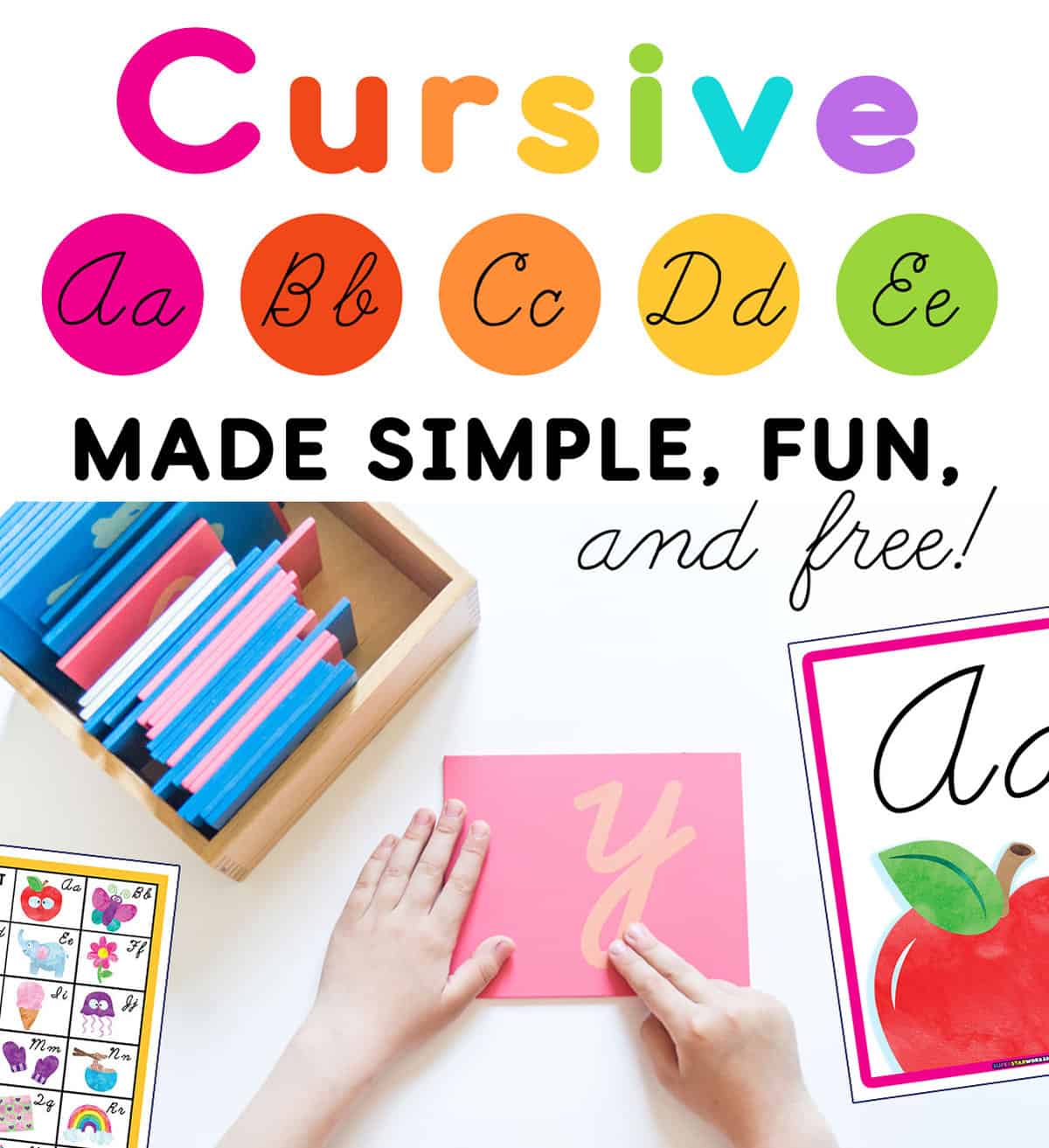
Teaching your students to read and write cursive is fun with our free cursive printables and teaching resources. You’ll find cursive alphabet charts, cursive letter formation and stroke order, cursive worksheets, cursive tracing, flashcards, task cards and more! Plus, helpful tips so you can teach your students cursive with ease. Not sure if your students are ready for cursive? Try our Pencil Control Bundle for easy and fun fine motor skills prep work.
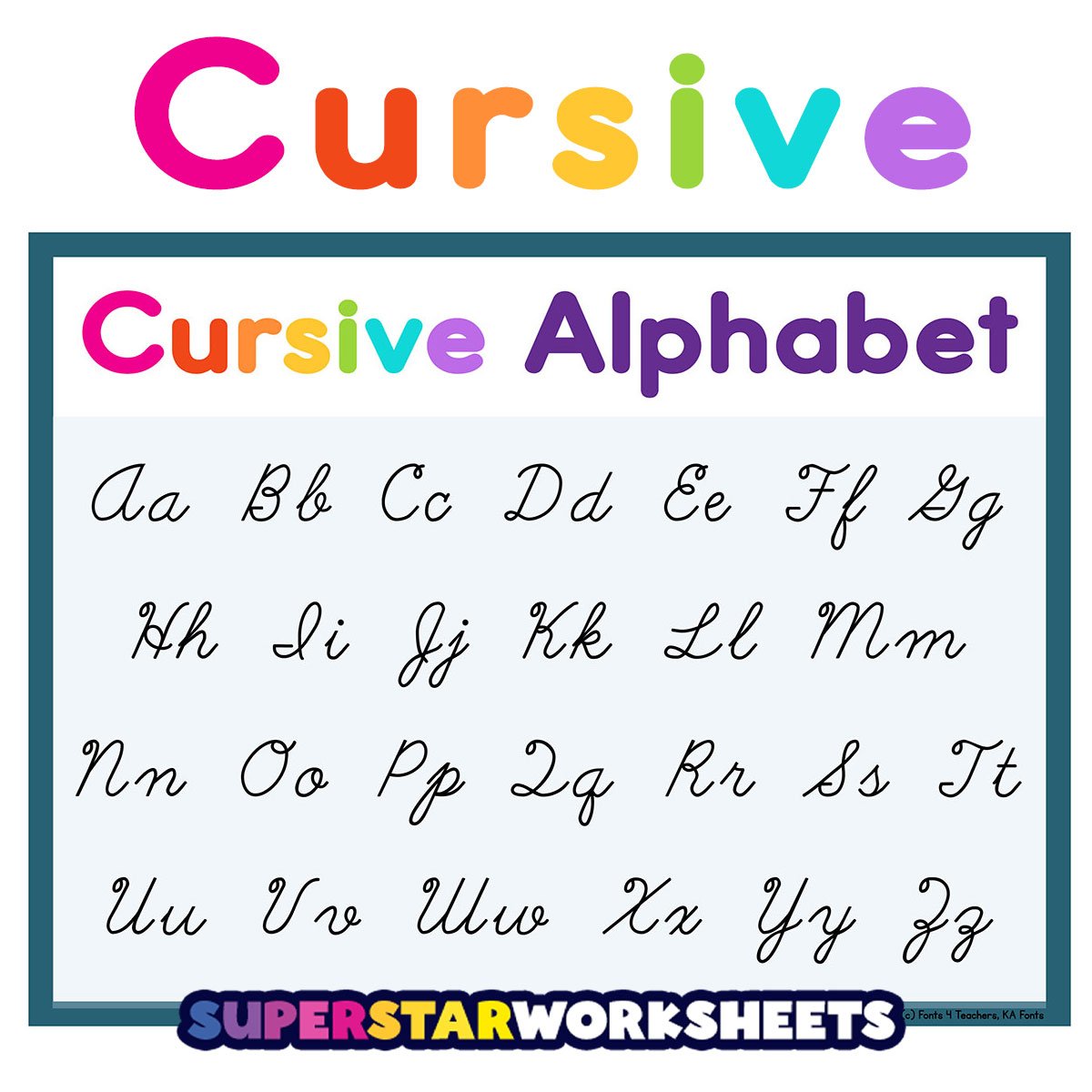
Cursive Alphabet
Free cursive alphabet printables, charts, worksheets, flashcards, and more for every letter of the alphabet! Students learn to read and write cursive uppercase and lowercase letters


Cursive Writing Worksheets
Free printables and teaching resources for students learning to read and write in cursive. We’ve created simple activity pages you can use to help your students master cursive. From Cursive Alphabet worksheets, to the planets in the solar system, these printable cursive writing worksheets will provide tons of extra practice. If your students need extra fine motor control practice, try our free path tracing worksheets to show students the continuous movement of the pencil from left to right.
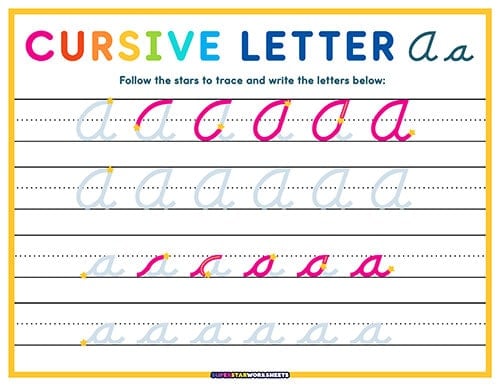
Cursive Writing
FREE Cursive Writing worksheets for elementary students. This is a set of cursive printables for students to write in cursive for the entire alphabet. Third-grade and fourth-grade students can learn how to write in cursive immediately with this set of 26 letters. Children will also exercise their fine motor writing skills when tracing each cursive letter.
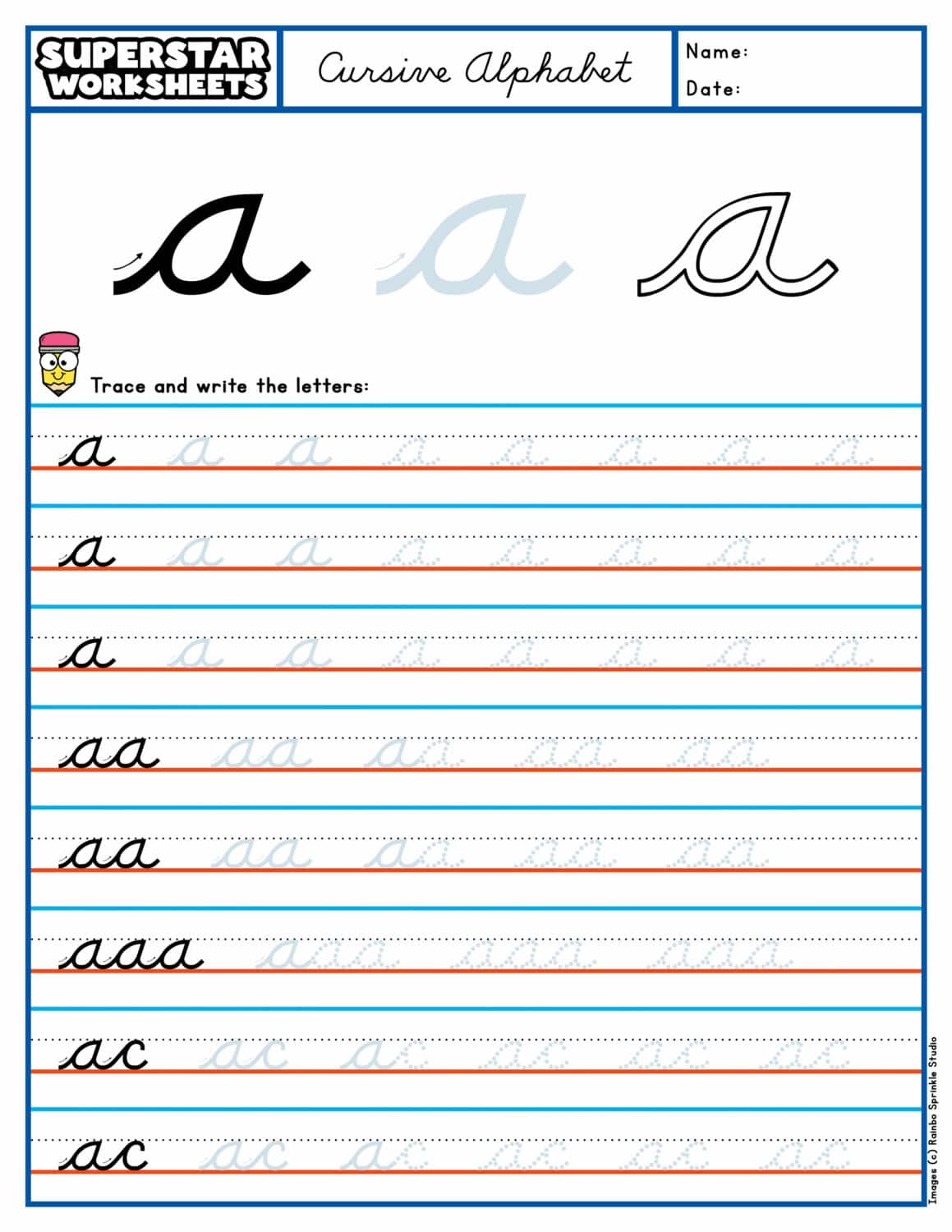
Cursive Handwriting
Elevate your elementary students’ writing skills with our free traceable cursive printables! Children will learn how to write the individual letters as well as how to connect the letters seamlessly.
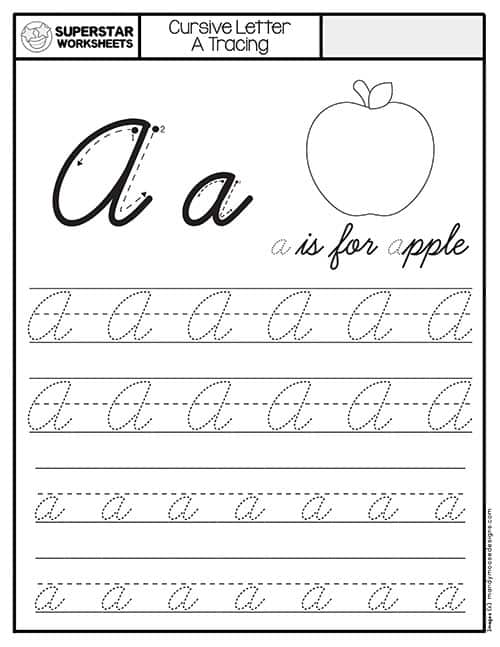
Beginning Cursive Writing
This set of cursive writing worksheets is the perfect introduction to cursive letters. Students are given larger writing lines and extra space between each letter. Both uppercase and lowercase letters are provided and the dashed lines are consistent over the sheet.

Cursive Alphabet Worksheets
This set of Cursive letter alphabet worksheets will help your students practice cursive handwriting for uppercase and lowercase letters. Featuring simple to-follow stroke order instructions, and gradually disappearing dashed tracing lines, this set is sure to build cursive handwriting confidence.

Cursive Writing Practice Worksheets
These are printable cursive practice pages specifically made for third-grade and 4th-grade students to practice their cursive penmanship. These cursive writing pages provide students with uppercase and lowercase letter practice while supporting them with stroke order. Handwriting worksheet pages make learning cursive fun and engaging, but you may want a little more for your students.
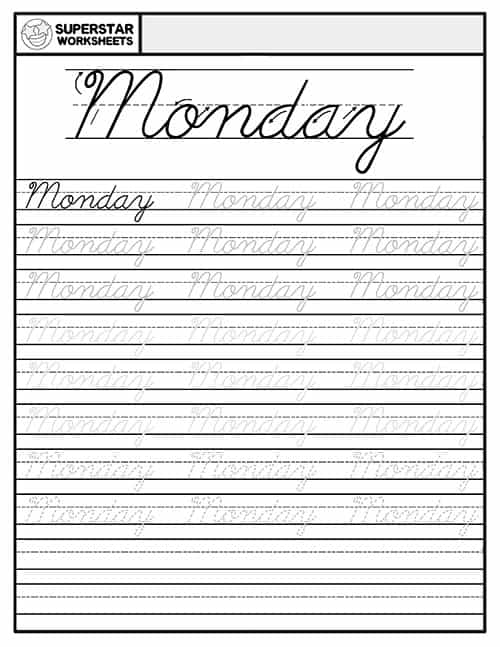
Cursive Days of the Week
Students work on spelling and cursive handwriting with this simple set of Cursive Days of the Week Handwriting Pages. Each page features a single day with gradually decreasing lines to build extra confidence with writing. All 7 days are available Sunday through Saturday.
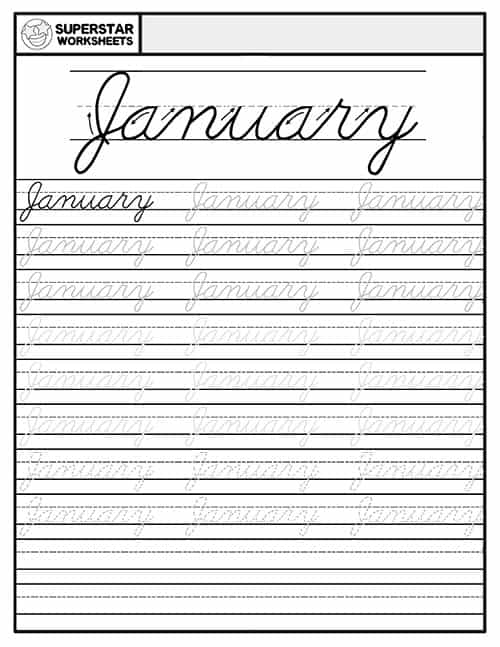
Cursive Months of the Year
After learning the days of the week, challenge your students to read, write, and spell the 12 months of the year in cursive! Each page provides simple visual instruction on pencil movement January through December.
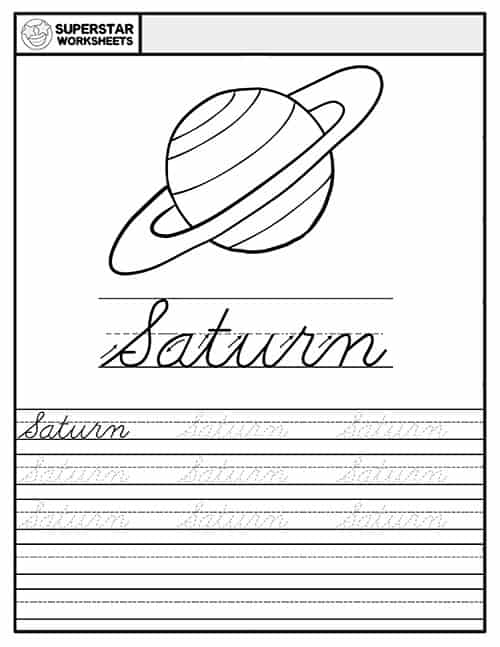
Planets in Cursive
Add some science into your ELA time with our free printable cursive worksheets for all the planets int the solar system. Each planet is depicted with easy coloring lines so these can be added into science notebooks as well.
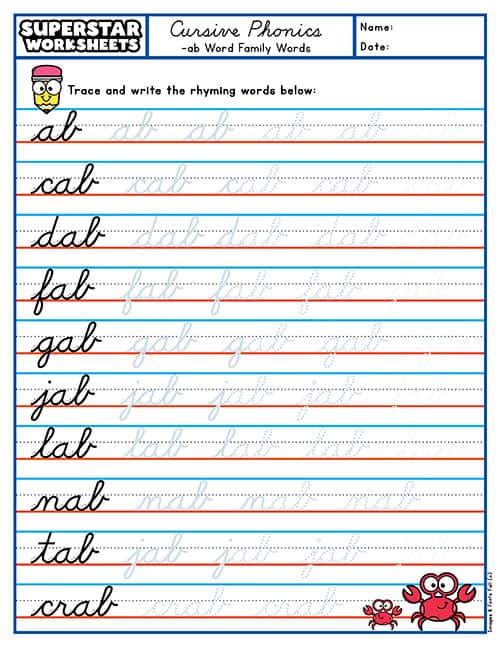
Cursive Phonics Worksheets
(coming soon) This set of cursive phonics worksheets will have your students learning word families and rhyming words as they practice connecting cursive letters to form words. This activity is super for spelling and reading practice!
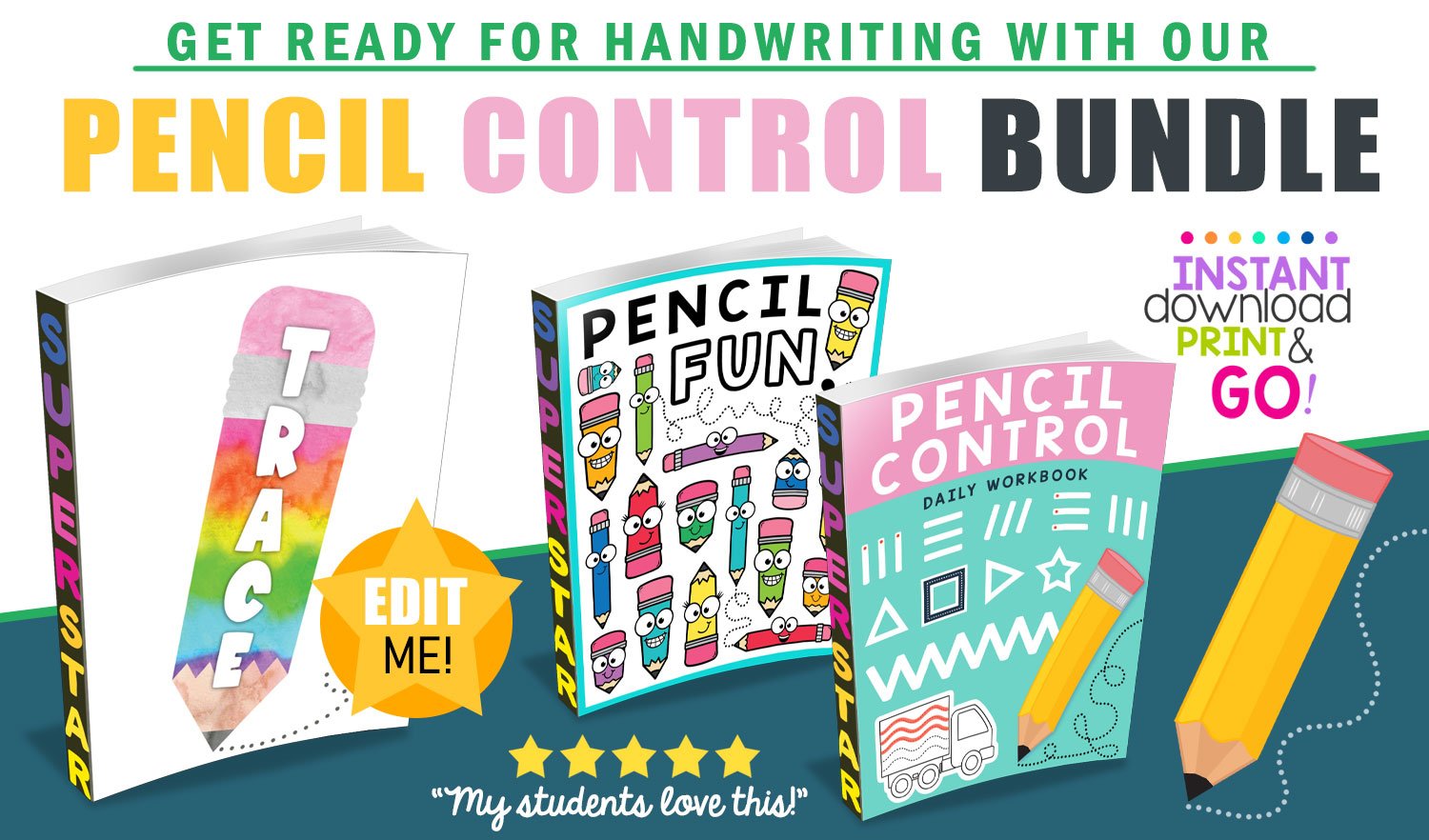
When Should I Teach My Students Cursive?
Cursive handwriting instruction is usually taught during the 2nd or 3rd-grade year. You might remember your own 2nd-grade classroom with the cursive alphabet border all along the classroom walls. Once students have a firm grasp on letter recognition of uppercase and lowercase letters, as well as beginning and early reading skills, they can handle reading and writing cursive letters. If you are looking for an amazing pre-handwriting program to prep your students for cursive try our Pencil Control Bundle.
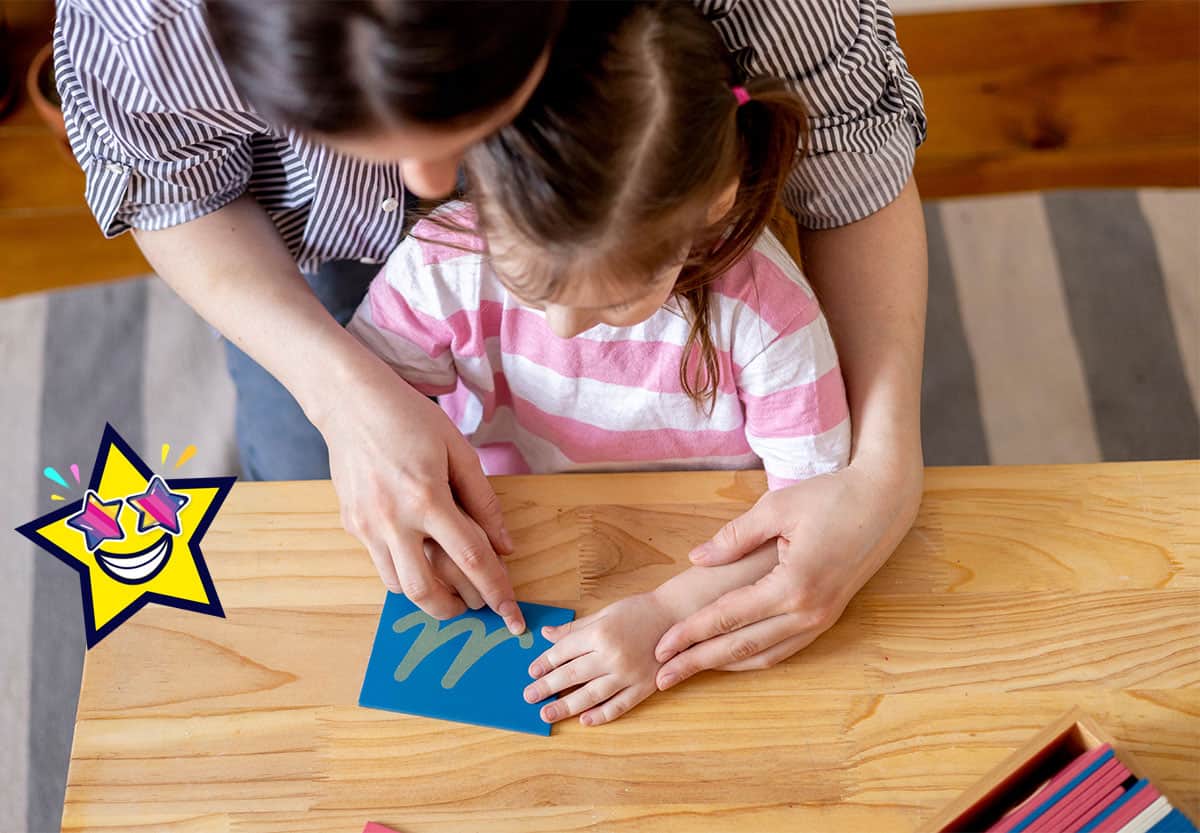
How to Teach Cursive
- Cursive Letter Recognition:
Even though cursive writing instruction usually starts in 2nd grade, you can begin teaching cursive letter recognition long before your students pick up a pencil to write. Simply hanging our Cursive Alphabet Charts in your classroom, is a good first start. Additionally, there are some amazing Montessori teaching tools that provide hands-on learning for cursive letters. Check out these wooden cursive alphabet letters, and these sandpaper cursive letters younger children can feel while they trace the movements with their fingers. You can also provide your younger students with our cursive letter flashcards and a sand tray to practice copying the letters in the sand, first with their fingers, and then with a brush or stick. - Demonstrate Proper Posture and Grip:
Getting ready to write is more than just small motor control. Before diving into writing, ensure the child is sitting comfortably with good posture at a desk or table. Teach them to hold the writing instrument (pen or pencil) with a relaxed grip using their thumb, index, and middle fingers. - Warm-Up Exercises: Lines and Shapes:
To help the child get used to cursive movements, start with some warm-up exercises. Teach them how to form curves, loops, and waves, which are the building blocks of cursive writing. Engage them in fun activities that involve drawing these shapes to develop their fine motor skills.Have them draw circles, waves, or other shapes that incorporate the basic movements used in cursive writing. Draw these shapes on blank paper and encourage your students to keep their pencil moving and to make patterns of loops and other designs. - Introduce Lowercase Letters First:
Begin with lowercase cursive letters, as they are generally easier to write and more commonly used. Teach the children to write their own names in cursive, as it creates a personal connection and boosts their interest in learning. - Use Tracing Worksheets:
Try our free printable tracing worksheets for practice with curved and continuous lines. Once students have a feel for the movement of cursive, provide cursive tracing worksheets that display cursive letters with directional arrows to guide the child’s hand movements. Tracing helps them get familiar with the letter’s shape and stroke order. Gradually reduce the tracing support as they gain confidence. You’ll find our worksheets gradually move from black ink to grey, then to a faint dotted line, so your students can build their cursive handwriting confidence. - Practice High-Frequency Words:
Select a list of high-frequency words that kids encounter frequently in reading and writing. Have them practice writing these words in cursive to make the learning process practical and relevant to their daily lives. Start with their name, address, spelling words, sight words, days of the week, months of the year, and really anything they are already very familiar with to reinforce the ability to recognize and read cursive. Remind the child that cursive writing should be smooth and connected. Encourage them to maintain a continuous flow of motion while forming the letter. - Cursive Jokes & Drawing Prompts:
Studies show that learning increases with engagement, so be sure to add fun activities to your classroom. Try our Cursive Directed Drawing Prompts that will not only provide extra practice with the cursive alphabet, but your students will be reading and writing silly jokes in cursive!
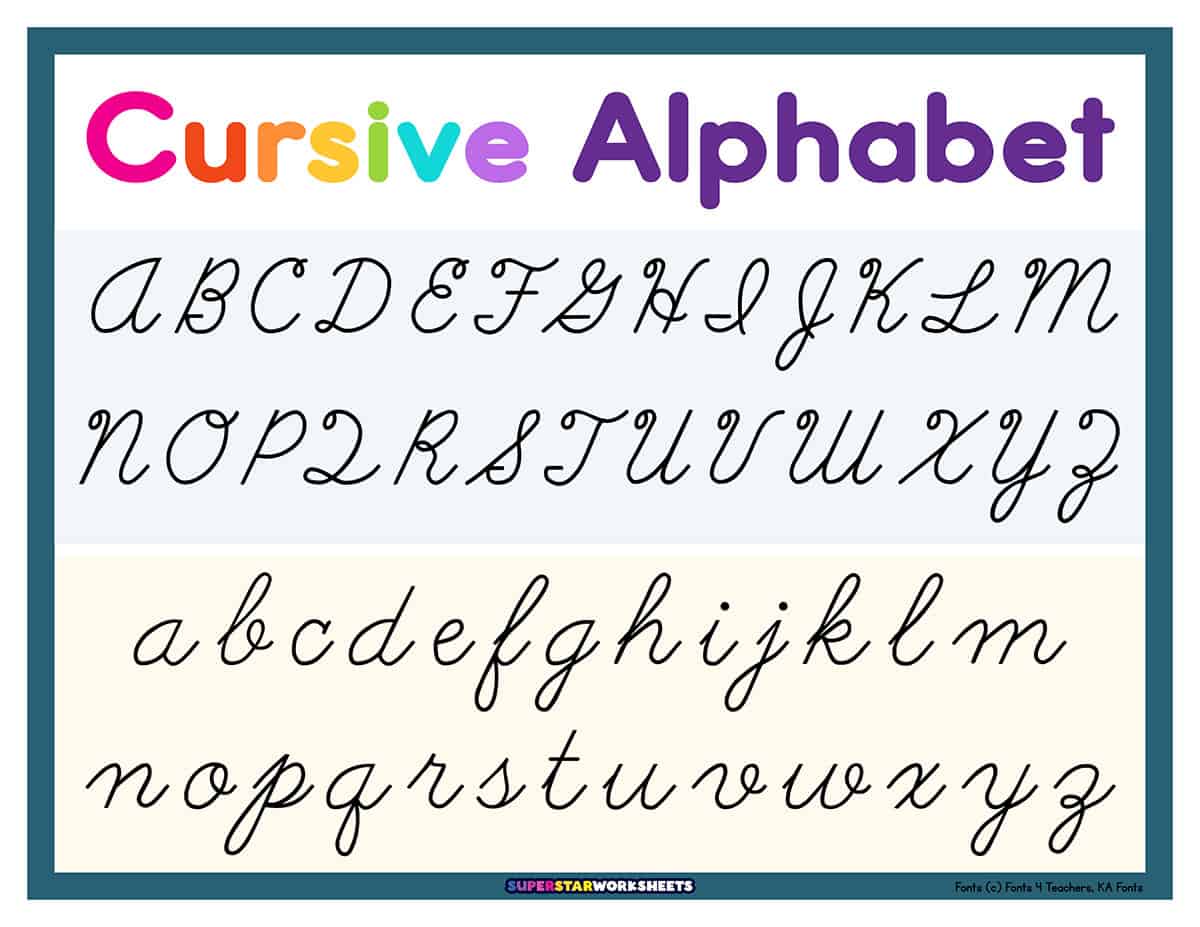
Cursive Styles and Fonts for Teachers
With all the different styles of cursive writing and teaching fonts available, you might be wondering which to choose! If you are serious about your cursive font needs, you can check out Educational Fontware, for a paid district, or homeschool license. These cursive fonts include helpful style connections you can make to your child’s specific curriculum. For example, you’ll find fonts in the style of Bob Jones University (R), Abeka (TM) Cursive First (R), Zanser Bloser (R) D’Nealian, Montssori and more!
In the past, we’ve also created cursive teaching resources use the amazing cursive fonts from Font4Teachers. These are much less expensive to purchase and were chosen because of the traditional font styles for the letters F, Q, T, as well as the forward-slanted style of writing. They also offer variations of dotted letters, handwriting lines and stroke order. There are many other cursive teaching fonts available online that you can use with your students depending on your needs. Here are some modern cursive fonts, D’Nealian Cursive fonts, and even a Handwriting Without Tears Cursive font if you are using the HTW program.
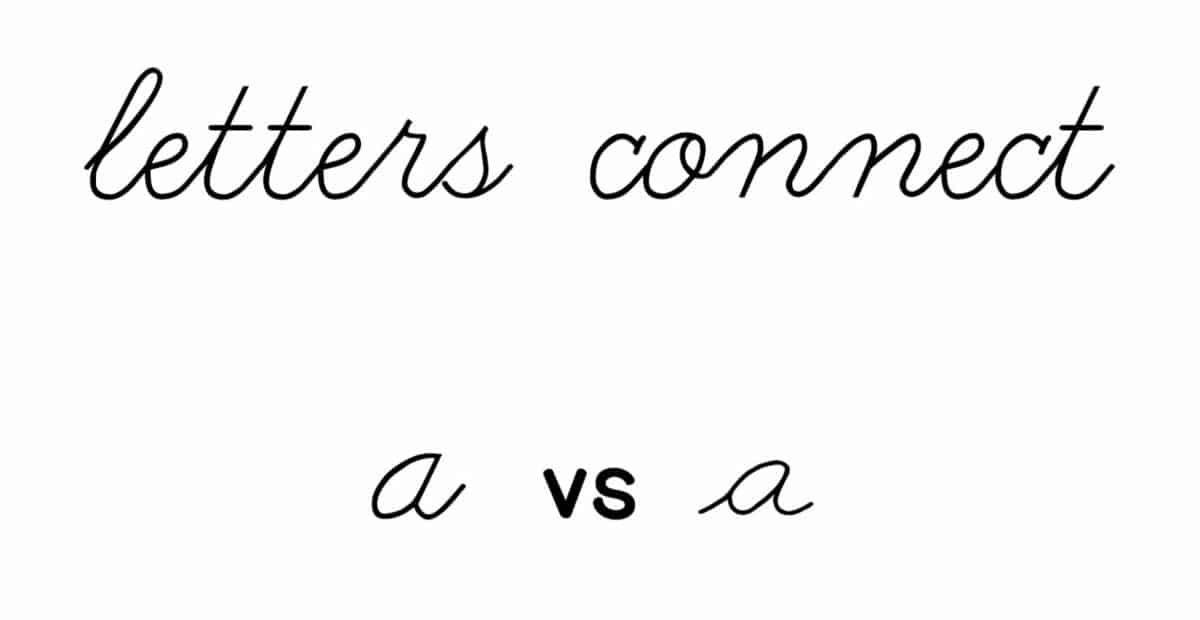
Which Style of Cursive to Teach?
Many school fonts contain previews so you can view the uppercase and lowercase letters. When choosing a cursive font for educational purposes, be sure to check that the connecting lines are smooth and appropriate (high or low connections) and that individual letters provide good starting lines. This is one difficulty we came across when using lower-cost cursive fonts– the initial starting letter doesn’t start at the baseline—I guess you can’t have it all! If you have a cursive font suggestion let us know in the comments below!


Leave a Reply